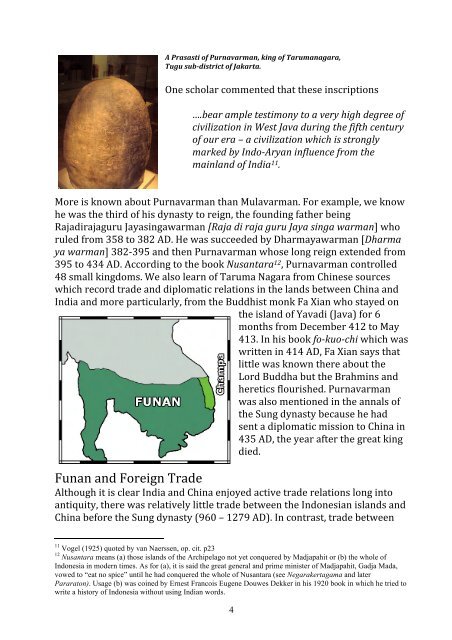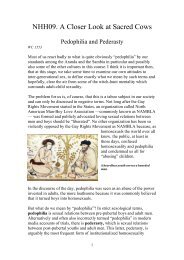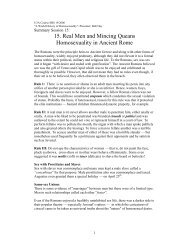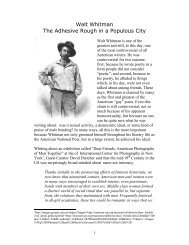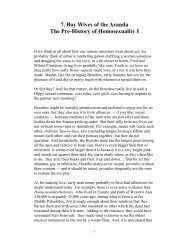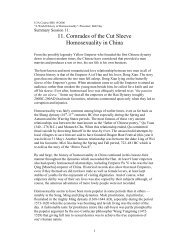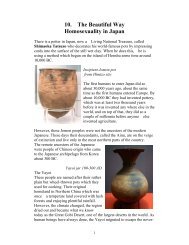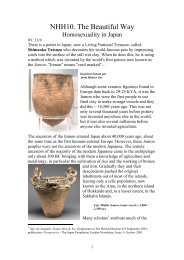A Short History of Indonesia - 11
A Short History of Indonesia - 11
A Short History of Indonesia - 11
Create successful ePaper yourself
Turn your PDF publications into a flip-book with our unique Google optimized e-Paper software.
A Prasasti <strong>of</strong> Purnavarman, king <strong>of</strong> Tarumanagara,<br />
Tugu sub-district <strong>of</strong> Jakarta.<br />
One scholar commented that these inscriptions<br />
….bear ample testimony to a very high degree <strong>of</strong><br />
civilization in West Java during the fifth century<br />
<strong>of</strong> our era – a civilization which is strongly<br />
marked by Indo-Aryan influence from the<br />
mainland <strong>of</strong> India <strong>11</strong> .<br />
More is known about Purnavarman than Mulavarman. For example, we know<br />
he was the third <strong>of</strong> his dynasty to reign, the founding father being<br />
Rajadirajaguru Jayasingawarman [Raja di raja guru Jaya singa warman] who<br />
ruled from 358 to 382 AD. He was succeeded by Dharmayawarman [Dharma<br />
ya warman] 382-‐395 and then Purnavarman whose long reign extended from<br />
395 to 434 AD. According to the book Nusantara 12 , Purnavarman controlled<br />
48 small kingdoms. We also learn <strong>of</strong> Taruma Nagara from Chinese sources<br />
which record trade and diplomatic relations in the lands between China and<br />
India and more particularly, from the Buddhist monk Fa Xian who stayed on<br />
the island <strong>of</strong> Yavadi (Java) for 6<br />
months from December 412 to May<br />
413. In his book fo-kuo-chi which was<br />
written in 414 AD, Fa Xian says that<br />
little was known there about the<br />
Lord Buddha but the Brahmins and<br />
heretics flourished. Purnavarman<br />
was also mentioned in the annals <strong>of</strong><br />
the Sung dynasty because he had<br />
sent a diplomatic mission to China in<br />
435 AD, the year after the great king<br />
died.<br />
Funan and Foreign Trade<br />
Although it is clear India and China enjoyed active trade relations long into<br />
antiquity, there was relatively little trade between the <strong>Indonesia</strong>n islands and<br />
China before the Sung dynasty (960 – 1279 AD). In contrast, trade between<br />
<strong>11</strong> Vogel (1925) quoted by van Naerssen, op. cit. p23<br />
12 Nusantara means (a) those islands <strong>of</strong> the Archipelago not yet conquered by Madjapahit or (b) the whole <strong>of</strong><br />
<strong>Indonesia</strong> in modern times. As for (a), it is said the great general and prime minister <strong>of</strong> Madjapahit, Gadja Mada,<br />
vowed to “eat no spice” until he had conquered the whole <strong>of</strong> Nusantara (see Negarakertagama and later<br />
Pararaton). Usage (b) was coined by Ernest Francois Eugene Douwes Dekker in his 1920 book in which he tried to<br />
write a history <strong>of</strong> <strong>Indonesia</strong> without using Indian words.<br />
4


